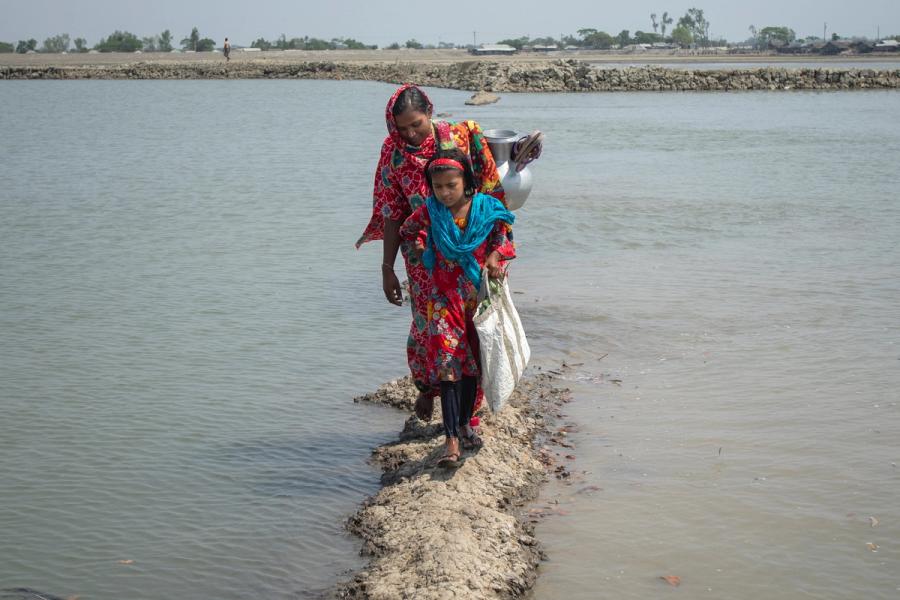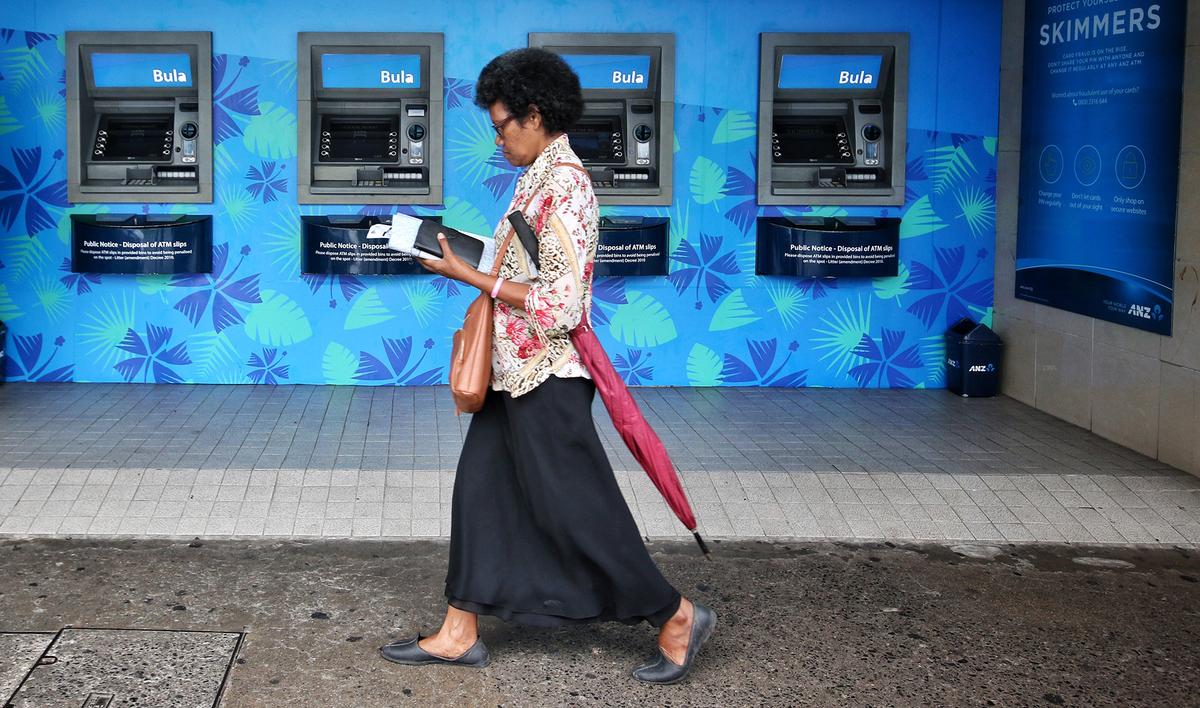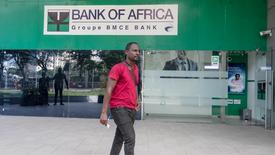Lending

IMF financing helps member countries tackle balance of payments problems, stabilize their economies, and restore sustainable economic growth. It can also be made available in response to natural disasters and pandemics. The IMF further provides precautionary financing to countries with sound policies that may have some remaining vulnerabilities to help prevent and insure against future crises, and it continues to enhance the tools available for crisis prevention.
IMF lending has traditionally fallen into two categories: General Resources Account (GRA) loans at interest rates determined by an average of those prevailing among the world’s main currencies and loans to low-income countries on concessional terms. All loans under the IMF’s PRGT are currently provided at zero interest. With the operationalization of the RST in 2022, there is now a new third lending pillar, which encompasses a tiered interest rate structure differentiated across country groups, with low-income members benefiting from more favorable terms.
Financial Assistance Approved in FY 2024
As of April 30, 2024 (in millions of special drawing rights, M SDR)
Benin
RSF
148.56
Million SDR
Burkina Faso
ECF
228.76
Million SDR
Burundi
ECF
200.20
Million SDR
Cabo Verde
RSF
23.70
Million SDR
Cameroon
AUG of EFF
73.60
Million SDR
AUG of ECF
36.80
Million SDR
RSF
138
Million SDR
Colombia
FCL
6,133.50
Million SDR
Comoros
ECF
32.04
Million SDR
Côte d’Ivoire
EFF
1,734.40
Million SDR
ECF
867.20
Million SDR
RSF
975.60
Million SDR
Egypt
AUG of EFF
3,761.52
Million SDR
Gambia
ECF
74.64
Million SDR
Ghana
ECF
2,241.90
Million SDR
Guinea-Bissau
AUG of ECF
11.36
Million SDR
Honduras
EFF
416.30
Million SDR
ECF
208.20
Million SDR
Jordan
EFF
926.37
Million SDR
Kenya
AUG of EFF
661.13
Million SDR
AUG of EFF
236.12
Million SDR
AUG of ECF
170.96
Million SDR
AUG of ECF
46.15
Million SDR
RSF
407.10
Million SDR
Kosovo
SBA
80.12
Million SDR
RSF
61.95
Million SDR
Malawi
ECF
131.86
Million SDR
Mauritania
RSF
193.20
Million SDR
Mexico
FCL
26,738.10
Million SDR
Moldova
RSF
129.38
Million SDR
Morocco
RSF
1,000
Million SDR
Niger
RSF
98.70
Million SDR
Pakistan
SBA
2,250
Million SDR
Paraguay
RSF
302.10
Million SDR
Rwanda
SCF
200.25
Million SDR
Senegal
EFF
755.07
Million SDR
ECF
377.53
Million SDR
RSF
242.70
Million SDR
Seychelles
EFF
42.37
Million SDR
RSF
34.35
Million SDR
Somalia
ECF
75
Million SDR
Suriname
AUG of EFF
46.80
Million SDR
Togo
ECF
293.60
Million SDR
No matching results.
Click on a Lending Agreement to see more info
SDR/US$ exchange rate
On April 30, 2024: SDR 1 = US$ 1.31793
Source: IMF, Finance Department.
Aug. = Augmentation
Country borders do not necessarily reflect the IMF's official position.
Lending map as of April 30, 2023. Visit imf.org for the latest information.
Brief Overview of FY 2024
Policy Initiatives
The IMF has continued to respond quickly to economic challenges stemming from the fallout of the COVID-19 pandemic, Russia’s war in Ukraine, and new conflicts in the Middle East, mostly through lending under IMF-supported programs.¹ These activities helped protect the lives and livelihoods of people and facilitate adjustment to shocks.
In FY 2024, many countries, especially low-income countries, continued to face persistent headwinds and an uncertain global economic environment, while dealing with reduced policy buffers and tight financing conditions. On May 18, 2023, the Executive Board approved the introduction of an interest rate cap for the RST’s lowest-income borrowers to better support members, especially low-income countries, in coping with these headwinds. This decision followed the April 2023 review of RST resource adequacy. The interest rate cap, set at 2¼ percent, applies to Group A RST-eligible countries that are part of the PRGT-eligibility list, but that do not blend their borrowing with GRA resources.
In June 2023, the IMF Executive Board approved a six-month extension until the end of March 2024 of the Food Shock Window under its emergency financing instruments. This window, which was originally approved for 12 months in September 2022, provided an additional channel for emergency financing to member countries that had urgent balance of payments needs as a result of acute food insecurity, a sharp increase in their food import bills, or a shock to their cereal exports. Because balance of payments pressures persisted throughout 2023, the extension aimed to allow the Food Shock Window to continue serving as a contingency tool during the extension period.
In June 2023, the IMF Executive Board also approved an extension of the temporarily higher cumulative access limits under the IMF’s emergency financing instruments, the Rapid Credit Facility (RCF) and the Rapid Financing Instrument (RFI),which were set to expire in June 2023. The temporarily higher limits ensure that the IMF will have the capacity to support countries in the event of renewed emergency situations while countries are still in the process of repaying emergency financing received during the pandemic.The higher limits under the RFI will be maintained until the end of June 2024, when most RFI recipients will have repaid a significant part of their past emergency financing. The higher limits under the RCF will be maintained until the completion of the 2024 review of PRGT facilities and financing, given the longer repayment schedule for RCF financing.
In addition, in June 2023, the Executive Board decided to postpone the next review of the PRGT interest structure by two years to the end of July 2025. The deferral of the review reflects the difficult environment and high uncertainty facing low-income countries as well as the intention to consider all policies regarding low-income country facilities during the 2024 review of the PRGT facilities and financing. This effectively maintains the zero percent interest rates on all PRGT credit. The interest rate on outstanding RCF credit had been permanently set at zero in 2015 and is not subject to review under the interest rate mechanism.
In October 2023, the IMF Executive Board completed the review of the Flexible Credit Line (FCL), the Short-Term Liquidity Line(SLL), and the Precautionary and Liquidity Line (PLL). The Board endorsed staff proposals for reforms, with the aim of further strengthening the global financial safety net and ensuring that the IMF’s precautionary facilities toolkit remains fit for purpose as external risks become more prevalent, protracted, and diverse. Recognizing that crisis prevention in the current shock-prone environment requires strengthening the qualification framework under the precautionary instruments as well as other reforms of the toolkit, the review took a three-pronged approach. First, to preserve the precautionary instruments’ strong signaling power, the review proposed to reinforce safeguards and ensure a robust qualification framework of the FCL, SLL, and PLL. Second, the review sought to make IMF precautionary instruments more useful for qualifying members by ensuring the instruments have the flexibility and firepower needed for confronting sizable and persistent systemic risks. In view of these factors, key reforms included (1) raising the SLL and PLL access limits, (2) introducing explicit provisions on concurrent use of the FCL and SLL to allow members to better respond to a wider variety of shocks, and (3) not requiring FCL members to discuss strategies to exit from financing under this instrument when the arrangement involves low access and is precautionary. Third and finally, the review maintained the IMF’s sound management of its precautionary toolkit by streamlining administrative procedures related to the use of precautionary instruments. It also assessed risks and potential implications for the IMF from implementation of key reforms.
In October 2023, the Executive Board of the IMF also completed the review of the Policy Coordination Instrument (PCI) and endorsed the proposal to eliminate the Policy Support Instrument (PSI). The PCI is a non-financing instrument supporting policies that meet upper-credit-tranche standards and is designed to help countries demonstrate commitment to a reform agenda and unlock financing from other sources. The PCI is available to all member countries. Against the backdrop of a challenging and shock-prone global environment, the Executive Board approved two key refinements to the PCI to make it more fit for purpose while maintaining its strong signaling function. The first was to enhance the flexibility of the review schedule while ensuring regular and uninterrupted signals to markets. The second was to require articulation of the rationale for concurrent use of a Standby Arrangement or a Stand-by Credit Facility arrangement by members with an ongoing PCI, which allows members to continue to demonstrate their commitment to a reform agenda while benefiting from access to IMF resources when needed. The Board also approved the elimination of the PSI given a demonstrated preference for the PCI as evidenced by the absence of requests for the PSI since 2015 and a universal switch by PSI users to the PCI.
¹ Including prepandemic commitments, as of April 30, 2024, total undisbursed lending commitments and credit outstanding under the General Resources Account were about SDR 170 billion; the corresponding total under the PRGT was about SDR 25.4 billion.

Regarding RST fundraising, the Board was informed in November 2023 of four new contribution agreements that were finalized between May and September 2023 and in April 2024 of four more contribution agreements that were finalized between October 2023 and March 15, 2024.² ³ As of April 30, 2024, there has been good fundraising progress with about SDR 34.3 billion in pledges received. Effective contribution agreements include SDR 25.4 billion in contribution packages from 16 countries, and SDR 5.6 billion in stand-alone contributions from 3 countries. Given strong and front-loaded demand for RST resources, fundraising efforts should be reinvigorated to secure additional resources. The 2023 review of RST resource adequacy indicated that reserves are adequate in the baseline and under several risk scenarios.
Following the achievement of the SDR 2.3 billion first-stage target under the July 2021 fundraising round for PRGT subsidy resources during the Annual Meetings in Marrakech, in December 2023 the IMF Executive Board approved a temporary increase in the annual access limit under the PRGT from 145 percent of quota to 200 percent of quota and a temporary increase in the cumulative access limit from 435 percent of quota to 600 percent of quota until the end of 2024. The PRGT access norms, which provide general guidance on access to PRGT facilities, and the per arrangement cap on PRGT resources under the blending policy were both also raised from 145 percent of quota to 200 percent of quota until the end of 2024. In January 2024, the IMF Executive Board approved an increase in the PRGT cumulative borrowing by SDR 3 billion from SDR 68 billion to SDR 71 billion to accommodate the better-than-expected loan mobilization outcome for additional loan pledges under the 2021 PRGT fundraising round. In FY 2024, seven PRGT lenders provided SDR 5.9 billion in new loan resources under the new PRGT borrowing agreements or by amending those that already exist.
In January 2024, the IMF staff completed an operational guidance note that aims to explain the key principles and considerations underlying the design and conditionality of IMF- supported programs. The note expanded on the previous operational guidance notes on conditionality published during 2003–14, incorporating lessons from the 2018–19 review of conditionality and other recent key policy developments, including the recommendation of the Management Implementation Plan in response to the Independent Evaluation Office’s report on growth and adjustment in IMF-supported programs. The note highlighted in particular operational advice to (1) improve real-world applications of macroeconomic forecasts in programs and foster more systematic analysis of contingency plans and risks; (2) improve the focus, depth, implementation, and tailoring of structural conditions with due consideration of growth effects; and (3) help strengthen the ownership by country authorities. Designed as a comprehensive reference and primer on program design and conditionality in an accessible and transparent manner, the note referred in summary to a broad range of economic and policy considerations over the life-cycle of IMF-supported programs.
In February 2024, the IMF Executive Board completed its review of the policy on program monitoring with Board involvement (PMB) and endorsed the proposal to keep it in the IMF’s toolkit, with a subsequent review expected in three years. The PMB was launched in October 2022 when the IMF amended its policy for staff-monitored programs to allow for program monitoring with Board involvement. As in the case of all staff-monitored programs, the objective of the PMB is to build or rebuild a track record of policy implementation toward an upper-credit-tranche-quality IMF-supported program. The PMB is carefully circumscribed for member countries under either (1) an ongoing concerted international effort by creditors or donors to provide substantial new financing or debt relief in support of the member’s policy program or (2) significant outstanding credit under emergency financing instruments at the time of a new request for such financing. It allows the Executive Board to weigh in, at the time of PMB approval, on the robustness of the member’s policies to meet the program’s objectives and, in the context of reviews, on whether it agrees with the staff that the member is on track to meet those objectives.
¹ Including prepandemic commitments, as of April 30, 2024, total undisbursed lending commitments and credit outstanding under the General Resources Account were about SDR 170 billion; the corresponding total under the PRGT was about SDR 25.4 billion.
² See 2023 Contribution Agreements with Italy, Luxembourg, Oman, And The United Kingdom.
³ See 2023 Contribution Agreements with Belgium, Malta, Qatar, and Switzerland.

In March 2024, the IMF Executive Board extended the temporary increase in normal access limits under the GRA (annual and cumulative access limits from 145 and 435 percent of quota, respectively, to 200 and 600 percent of quota) until the end of 2024, instead of allowing these higher access limits to revert to their previous levels in early March 2024 as originally envisaged. The proposed extension reflects the still-high uncertain global economic environment. Importantly, it helps bridge the gap to the comprehensive review of access limits planned for the second half of 2024, which will review access limits in the context of the erosion of the nominal value of access limits against key metrics and the outcomes of the 16th General Review of Quotas.
In March 2024, the IMF Executive Board received an update on PRGT resource adequacy, including on debt relief trusts, the Catastrophe Containment and Relief Trust (CCRT), and the Heavily Indebted Poor Countries (HIPC)Initiative.
- Regarding PRGT resource adequacy, the update underscored (1) the achievement of the first-stage fundraising targets for loans (SDR 12.6 billion) and subsidy resources (SDR 2.3 billion)—loan resources raised totaled SDR 14.7 billion, exceeding the target, and SDR 2.3 billion was raised for subsidy resources; (2) continued high PRGT lending (new PRGT lending commitments reached SDR 6.3 billion in 2023, almost double the amount of 2022); and (3) higher but manageable credit risks of PRGT-eligible countries. Amid the continued high demand for PRGT lending and high SDR interest rates, the PRGT adequacy update noted a need for reforms to ensure PRGT long-term self-sustainability while meeting the financing demands of PRGT-eligible countries. The forthcoming comprehensive PRGT review will tackle this issue. Finally, the update also highlighted the need to replenish the CCRT and noted that the HIPC Initiative is nearly complete, with Somalia reaching its HIPC completion point in December 2023.
- The CCRT—the IMF’s vehicle for delivering IMF debt-service relief to its poorest members when they face qualifying events—delivered unprecedented support during the pandemic. It disbursed SDR 690 million in grants to cover debt-service relief in five tranches during the two-year period from April 14, 2020, to April 13, 2022. This debt relief benefited a total of 31 eligible countries, which are the poorest and most vulnerable IMF members, helping them free up scarce financial resources for priority spending (for example, on health) to mitigate the impact of the COVID-19 pandemic. Despite securing SDR 609.5 million in grant pledges during the pandemic, total pledges fell short of the fundraising target (SDR 1 billion) and of the total cost of the full two-year COVID-19–related debt-service relief, which required a significant drawdown of the pre-pandemic cash balance. Moreover, despite continued fundraising efforts, no new pledges have been received since December 2021. The CCRT remains, therefore, severely underfunded, with a resource balance of about SDR 78 million as of April 30, 2024. Additional grants are needed to replenish the CCRT so that it can respond to future qualifying events. The financial challenges facing the CCRT will be taken up in the next CCRT review, which is scheduled for FY 2026.
- Reflecting the difficult global environment, demand for IMF concessional financing remained high compared with pre-pandemic levels, as noted earlier.

Lending Overview
Demand for lending and support under the IMF’s precautionary facilities remained high in FY 2024. Between May 1, 2023, and April 30, 2024, new requests were approved for about SDR 53 billion, focused on the following areas:
- Building on existing lending arrangements: The IMF augmented existing arrangements to accommodate urgent new financing needs in the context of ongoing policy dialogue for an amount of SDR 5 billion. The Executive Board approved augmentation of arrangements with five members.
- New lending arrangements, including precautionary arrangements: The Executive Board approved 21 new non-precautionary IMF arrangements with 18 countries. These included 11 arrangements under the Extended Credit Facility for a total of SDR 4.73 billion, 5 under the Extended Fund Facility for a total of SDR 3.87 billion, 1 under the Stand-by Arrangement for a total of SDR 2.25 billion, and 1 under the Standby Credit Facility for a total of SDR 0.2 billion. In addition, 3 precautionary arrangements, 1 Stand-by Arrangement, and 2 FCL arrangements were made available to members.
- In addition, the Executive Board approved requests for arrangements under the Resilience and Sustainability Facility focusing on climate change from 13 countries: Benin, Cabo Verde, Cameroon, Côte d’Ivoire, Kenya, Kosovo, Mauritania, Moldova, Morocco, Niger, Paraguay, Senegal, and Seychelles (totaling about SDR 3.8 billion).
- Debt relief under the Heavily Indebted Poor Countries (HIPC) Initiative:⁴ On December 13, 2023, the IMF Executive Board and the World Bank’s International Development Association approved Somalia’s completion point under the enhanced HIPC Initiative.⁵ At the completion point, Somalia received full debt relief in the amount of SDR 250.43 million.⁶ Sudan’s prospects for reaching its HIPC completion point remain uncertain. The IMF-supported program for Sudan that was approved in June 2021 expired in December 2022. A new PRGT arrangement would be needed to support progress toward reaching the HIPC completion point.⁷
⁴ No country requested debt relief under the Catastrophe Containment and Relief Trust during FY 2024.
⁵ The HIPC Initiative was launched in 1996 by the IMF and the World Bank, with the aim of ensuring that no poor country faces a debt burden it cannot manage. The initiative involves a two-step process through which countries must meet certain criteria, commit to poverty reduction through policy changes, and demonstrate a good track record over time. The IMF and World Bank Executive Boards determine that a country qualifies for debt relief under the HIPC Initiative, which is the first stage (HIPC decision point). Multilateral and official bilateral creditors may provide interim debt relief on a country’s HIPC-eligible debt in the interim period, and, when a country meets its commitments, full debt relief is provided, which is the second stage (HIPC completion point).
⁶ On March 25, 2020, following Somalia’s clearance of its arrears to the IMF, the Executive Boards of the IMF and the World Bank determined that Somalia qualified for debt relief under the enhanced HIPC Initiative and that Somalia had reached its HIPC Initiative decision point. Since then, the IMF Executive Board had approved four tranches of interim HIPC assistance to Somalia in the total amount received of SDR 4.812 million to cover 100 percent of its eligible financial obligations falling due to the IMF during the interim period between the HIPC decision and completion points.
⁷ Sudan received interim assistance covering the period between its decision points on June 29, 2021, and June 28, 2022, to cover debt service obligations on pre-arrears clearance debt falling due during that period. No further interim assistance is expected for Sudan, provided it reaches the HIPC completion point by December 29, 2026, as the country currently does not have any debt service repayments to the IMF falling due before this date.


